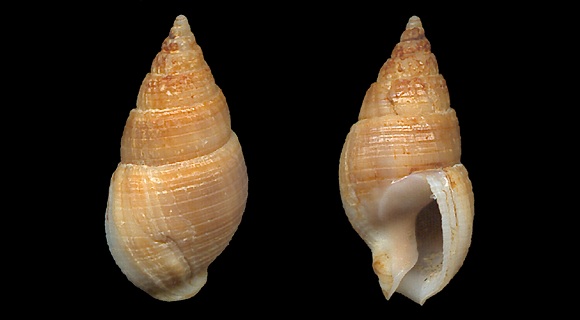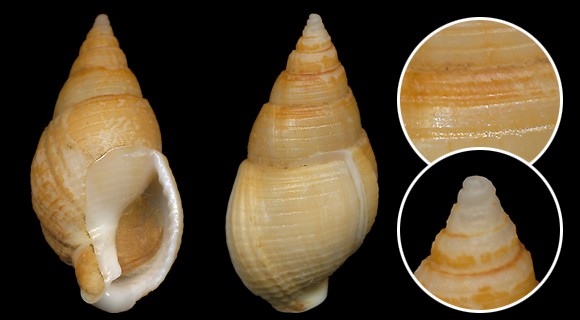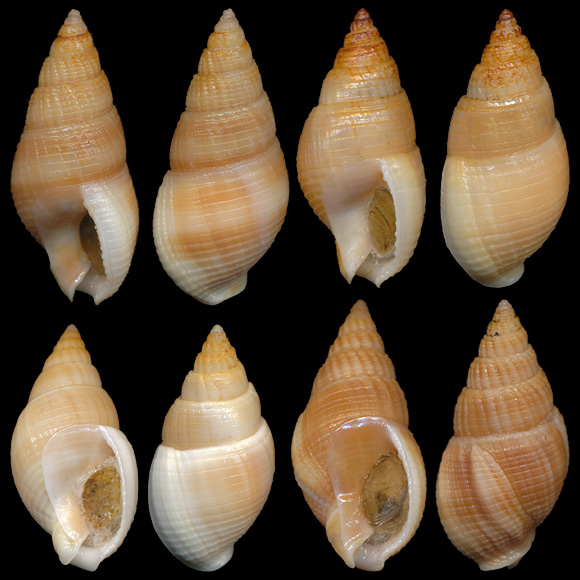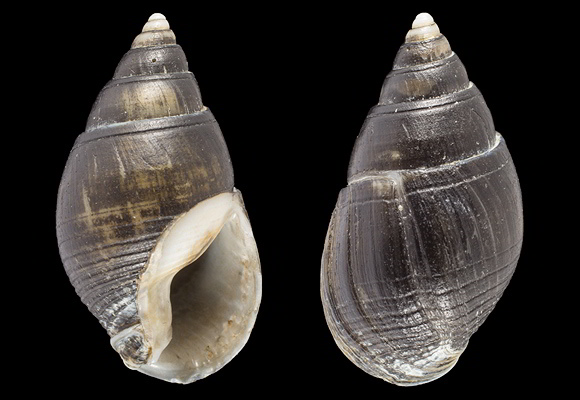
200m deep, Málaga, Andalucia, S. Spain. 16mm.

« Shell of the same size than Nassa semistriata but with a much swollen curve, almost exactly ovoid; spire short, with rounded whorls, separated by a well-marked suture; last whorl very developed especially in diameter; aperture slightly high, well rounded; columella short; callus very thick. » – A. Locard: “Prodrome de malacologie française”, Catalogue général des mollusques vivants de France. Mollusques marins, Lyon 1886, p.553. Synonym trifasciata Mac Andrew.
Variants cornea, costulata, curta.
250m deep, off Estepona, Málaga. 14mm.

« This new species differs from Nassa semistriata, as can be seen: by its much stronger diameter; by its lower spire; by its more rounded whorls, separated by a deeper suture; by its greater apereture, and especially proportionately wider, at the same time more descending and more rounded at the bottom; by its shorter columella; by its thicker callus, though not more extensive; etc. » – Ibid.
Sculpture variation.
250m deep, on mud bottom, near Alborán island. 15-18mm.

Syntype MNHN-IM-2000-6705 caught off the type-locality Royan, Charente-Maritime, W. France, at the Muséum National d’Histoire Naturelle de Paris, France. Locard collection. Original pictures provided by M. Caballer for the MNHN – (CC BY). This specimen is more ovoid than the spanish shells pictured above, and its parietal callus is markedly thicker.